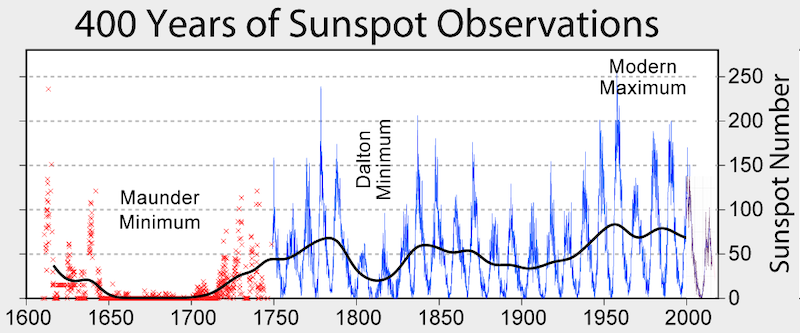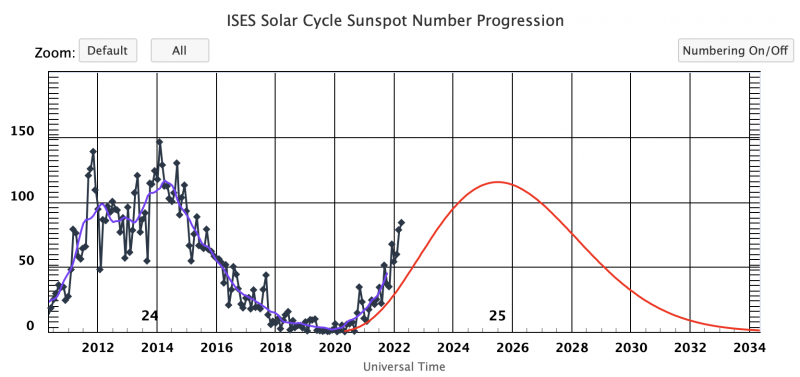
When the sun is quiet
The sun has a cycle of activity lasting around 11 years. Overall sunspot numbers typically rise dramatically at the peak of every cycle. Solar Cycle 25 officially began several years ago. And – as of this writing, May 2, 2022 – the sun’s activity is now rising. But the peak of the last solar cycle (Cycle 24) was weirdly quiet, according to observers. Now, although the sun’s actiivty is rising overall, we do sometimes see several days in a row of quiet, as we did last week.
And so some have asked if the sun could be moving toward a Grand Solar Minimum now.
Grand Solar Minima happen when the peaks of several solar cycles in a row show less than average intensity. Quiet times on the sun have been known to extend for decades or even centuries. Solar cycles still occur during these periods. But they are at a lower intensity than usual.
The best-known Grand Solar Minimum was the Maunder Minimum of 1645-1715. During that time, the sun was largely devoid of any sunspots.
Read the sun news: Go to EarthSky’s live sun page

Are we in a Grand Solar Minimum?
So what about this solar cycle? Does a quiet period on the sun indicate we’re headed to another Grand Solar Minimum?
The basic answer is no. Even as we move closer to a solar maximum around 2025, solar activity will naturally go up and down. The solar cycle is clearly picking up as we can see from the overall sunspot number. But we will still have lull periods. Moving forward, we will see longer and stronger bursts of activity with certainly more large flares, Earth-directed CMEs and geomagnetic storms.
So, as of now, the current activity level is normal and to be expected.
More activity is certain to come.

Bottom line: A Grand Solar Minimum happens when the peaks of several solar cycles in a row show less than average intensity. A few days of quiet on the sun doesn’t mean we’re headed for one now.
The post A Grand Solar Minimum? Or a normal sun? first appeared on EarthSky.
0 Commentaires